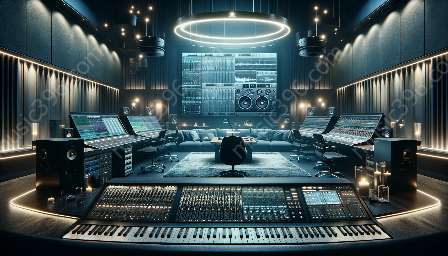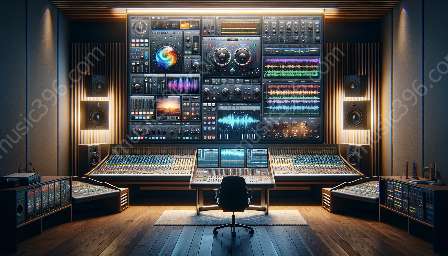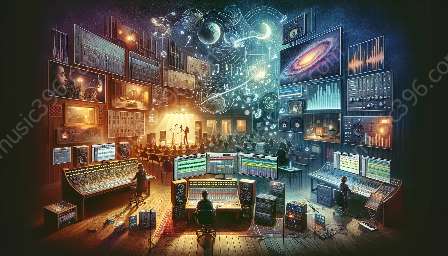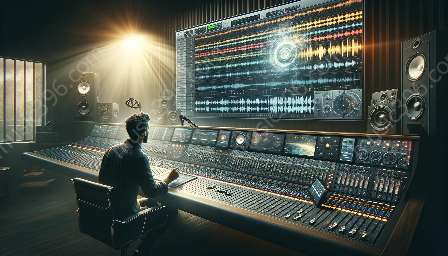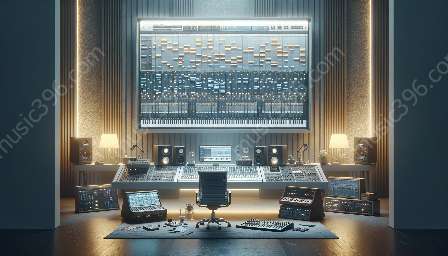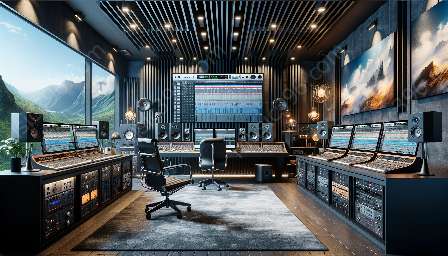In recent years, drum programming within Digital Audio Workstations (DAWs) has experienced significant developments, enhancing the creativity and capabilities of music producers. This article will delve into the trends and future developments in drum programming within DAWs, and how it relates to the techniques for drum programming in DAWs and digital audio workstations.
Evolution of Drum Programming in DAWs
The introduction of DAWs revolutionized the music production process, providing a platform for creating and manipulating digital audio. Initially, drum programming in early DAWs was limited to basic step sequencing and sample-based drum machines, offering minimal customization and flexibility. However, as technology progressed, the capabilities of drum programming within DAWs expanded exponentially.
One of the significant developments in drum programming within DAWs was the integration of advanced rhythm and groove tools. DAWs now include features for humanizing drum patterns, adding swing, and adjusting velocity to mimic the nuances of live drumming. This shift towards more realistic and dynamic drum programming has enabled producers to create authentic, expressive drum arrangements within the digital environment.
Trends in Drum Programming Techniques
The evolution of drum programming techniques within DAWs has led to the emergence of several trends that are shaping the future of music production. One such trend is the blending of traditional drum programming with algorithmic and generative approaches. Modern DAWs feature built-in tools and plugins that employ AI and machine learning to generate complex drum patterns and rhythms, opening up new creative possibilities for producers.
Another trend in drum programming techniques involves the integration of modular and modular-like environments within DAWs. Modular drum programming allows producers to create intricate, evolving drum sequences by connecting virtual modules and synthesizers in a visual, patch-based interface. This modular approach offers unparalleled flexibility and encourages experimentation, leading to the development of unique and innovative drum patterns.
Future Developments and Innovations
Looking ahead, the future of drum programming within DAWs holds exciting possibilities for further advancements and innovations. One area of anticipated development is the increased integration of machine learning and AI-driven tools for drum programming. This could lead to more intelligent and adaptive algorithms that can analyze and adapt to the musical context, enabling DAWs to assist producers in generating personalized and contextually relevant drum patterns.
Additionally, the convergence of virtual reality (VR) and DAW technology is poised to revolutionize the way producers interact with and program drum patterns. VR-enabled DAW environments may offer immersive, three-dimensional interfaces for visually arranging and manipulating drum elements, providing a more intuitive and creative workflow for producers.
The Intersection of Drum Programming and Digital Audio Workstations
Understanding the intersection of drum programming and digital audio workstations is essential for producers aiming to leverage the full potential of modern DAW technology. Techniques for drum programming in DAWs encompass a wide range of tools and methods, including step sequencing, MIDI programming, sample manipulation, and the use of dedicated drum pattern editors.
Furthermore, the role of DAWs in drum programming extends beyond traditional rhythm creation, with the incorporation of advanced audio processing and effects. DAWs offer a plethora of built-in effects, such as compression, EQ, and reverb, which can greatly enhance the sonic character of programmed drum patterns. Additionally, the integration of third-party plugins and virtual instruments further expands the sonic palette available for drum programming within DAWs.
Conclusion
As drum programming within DAWs continues to evolve, it is evident that the future holds tremendous potential for innovative advancements and creative possibilities. By understanding the trends and future developments in drum programming, producers can stay ahead of the curve and leverage the latest tools and techniques to elevate their music production endeavors.

